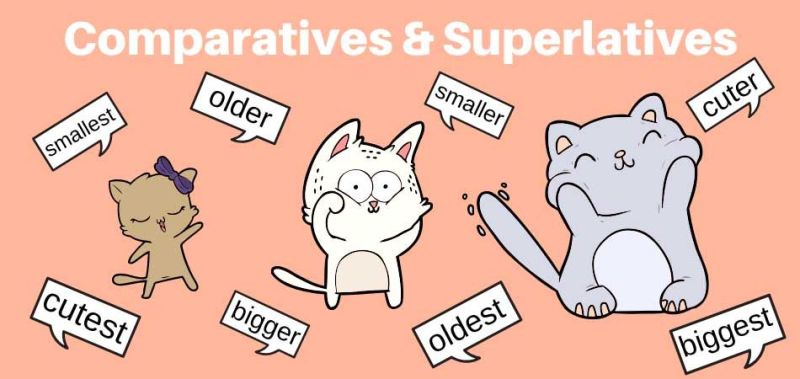In this article we explain how comparatives and superlatives are used using pictures to help make it easier to understand. In English, when we want to make comparisons we use modified adjectives called comparatives and superlatives. Comparative adjectives are used in sentences comparing two things, while superlative, adjectives are used to show the best of a group.
For example:
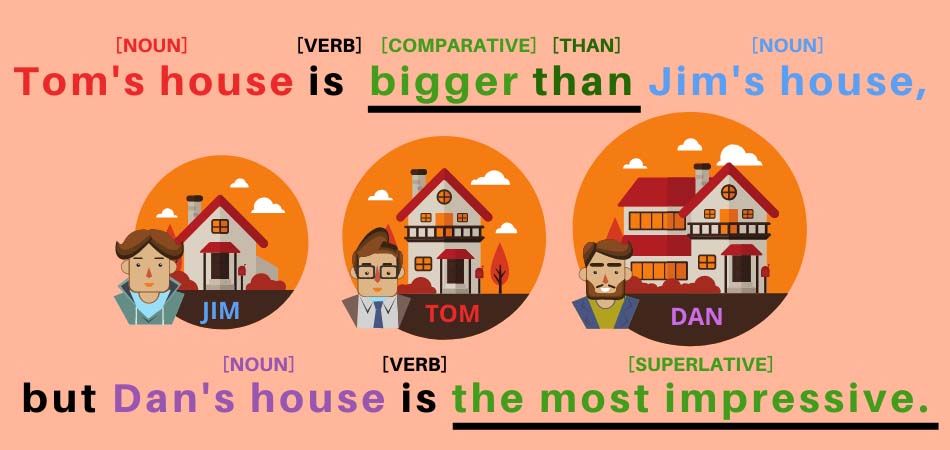
- [Tom’s house] + [is] + [bigger] + [than] + [Jim’s house,]
[NOUN] + [VERB] + [COMPARATIVE ADJECTIVE] + [THAN] + [NOUN]
- but [Dan’s house] + [is] + [the most impressive.]
[NOUN] + [VERB] + [SUPERLATIVE ADJECTIVE]
Comparatives and superlatives: Short one-syllable adjectives use “-er” and “-est”
Forming comparatives and superlatives is quite easy. The structure depends on the number of syllables, or sounds, of the original adjective. Short, one-syllable adjectives add “-er” for the comparative form followed by “than”, while the superlative form uses “the” in front of the original adjectives plus “-est” at the end.
For example:
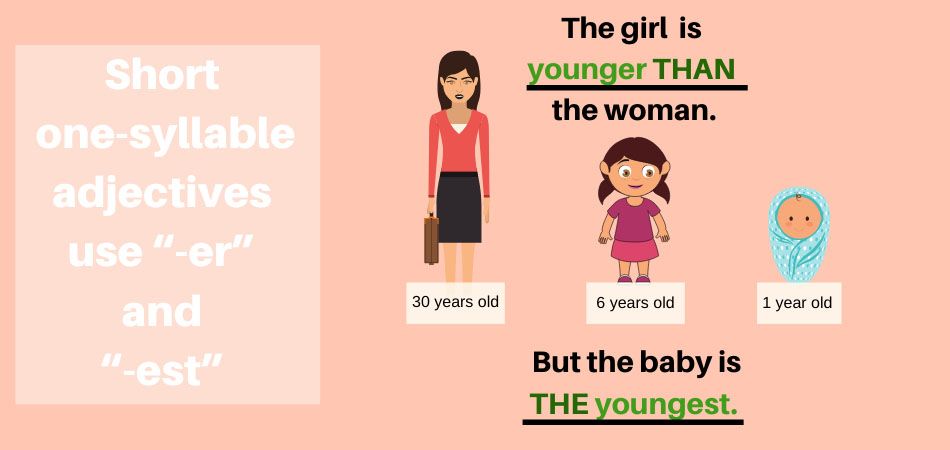
- The girl is younger than the woman, [comparative]
but the baby is the youngest. [superlative]
- The cat is smaller than the dog, [comparative]
but the mouse is the smallest. [superlative]
- The train is faster than the car, [comparative]
but the plane is the fastest. [superlative]
Comparatives and superlatives: Two-syllable adjectives can use “-er / -est” or “more / most”
For longer adjectives made up of two syllables/sounds, the comparative is formed either by using “-er” like one-syllable adjectives or by putting “more” in front of the original adjective. The superlative, in a similar way, is made by adding “-est” or by using “most” before the original adjective. Usually, one form is more popular than the other but both can be used. If you’re not sure which structure a two-syllable adjective can take, the safe option is to use “more / most”. Remember that adjectives that end in the letter “y” will change their spelling to “i” before adding “-er / est”.
For example:
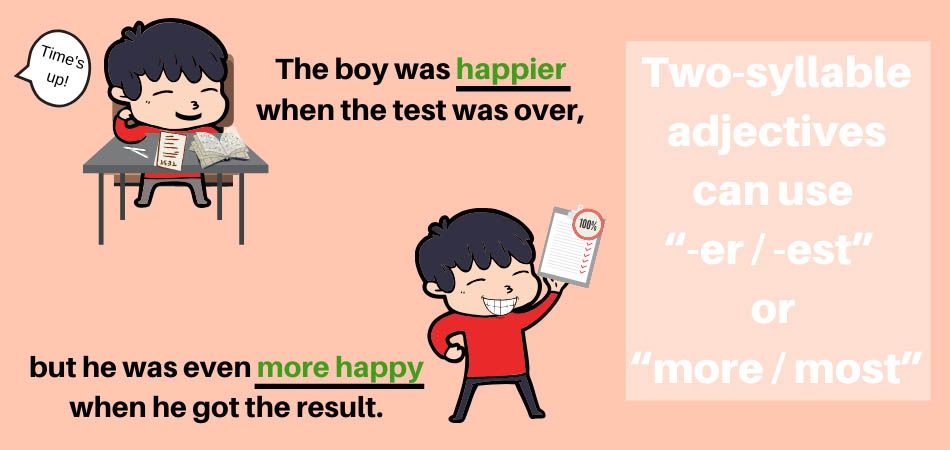
- The boy was happier when the test was over, [comparative with “-er”]
but he was even more happy when he got the result. [comparative with “more”]
- This is the most busy the restaurant has been recently. [superlative with “most”].
It’s because Christmas is the busiest time of year. [superlative with “-est”]
Long adjectives of three or more syllables will always use “more / most”
Since it would be difficult to add extra endings to adjectives that are already long, in English we use “more” and “most” with adjectives that have 3 or more syllables/sounds when comparing.
For example:
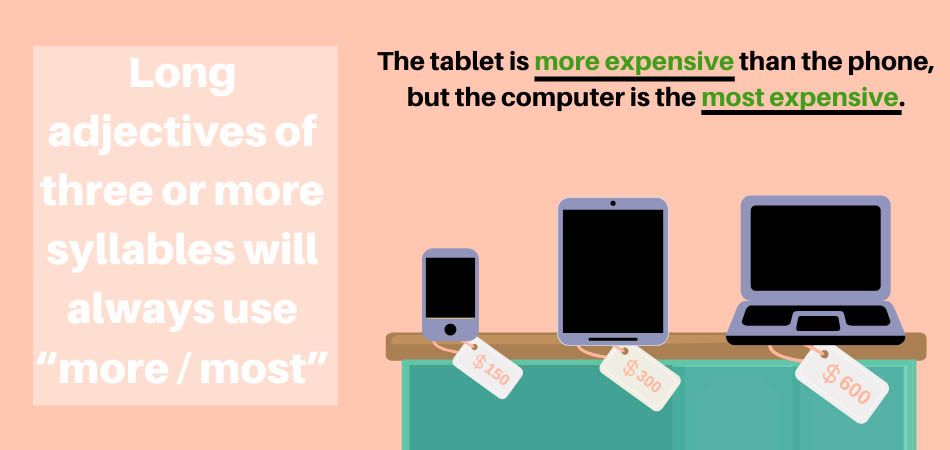
- The tablet is more expensive than the phone, [comparative]
but the computer is the most expensive. [superlative]
NOT expensiver / expensivest
- History is more interesting than geography, [comparative]
but I think English is the most interesting subject. [superlative]
NOT intrestinger / intrestingest
What’s your English level?
Find out by completing one of our level tests!
What’s your English level?
Find out by completing one of our level tests!
Some common adjectives are irregular, they have unique forms
In English, some of the words we use most often are the words that have kept old grammar structures and are exceptions to the usual rules. In these cases, you just have to memorize each different form. The good news is that there aren’t too many common irregular adjectives, here are some of the most frequent ones:
[adjective] > [comparative] > [superlative]
- good > better > best
- bad > worse > worst
- much > more > most
- little > less > least
For example:
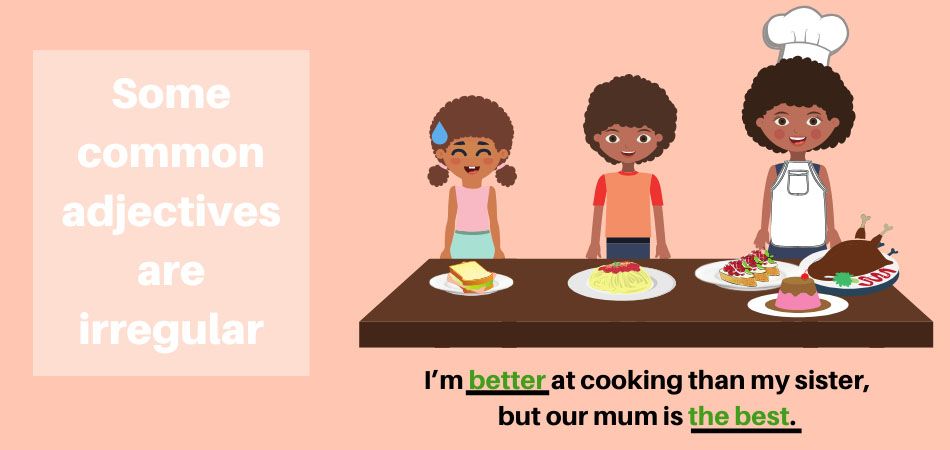
- I’m better at cooking than my sister, [comparative]
but our mum is the best. [superlative]
- The second film was worse than the first, [comparative]
but the third film was the worst overall. [superlative]
Summary of comparatives and superlatives
Using comparative and superlative adjectives is quite simple, just remember that short adjectives tend to add “er/est” at the end of the word, while long adjectives use “more/most” before the word, and try to learn the irregular adjective forms one by one. People compare things all the time and we see and hear comparative language all around us every day. Music, of course, uses many comparative and superlative adjectives too. Listen to the songs below that have comparative/ superlative structures and leave a comment below with any more songs you can think of that use this kind of grammar. Thanks for reading!
Tina Turner – You’re Simply the Best
Daft Punk – Harder, Better, Faster, Stronger
Andy Williams – The Most Wonderful Time of the Year
For other examples of grammar explained in pictures, check out our GRAMMAR INDEX here.

This article was written by Break Into English’s blog contributor Ilaria Marazzina.

